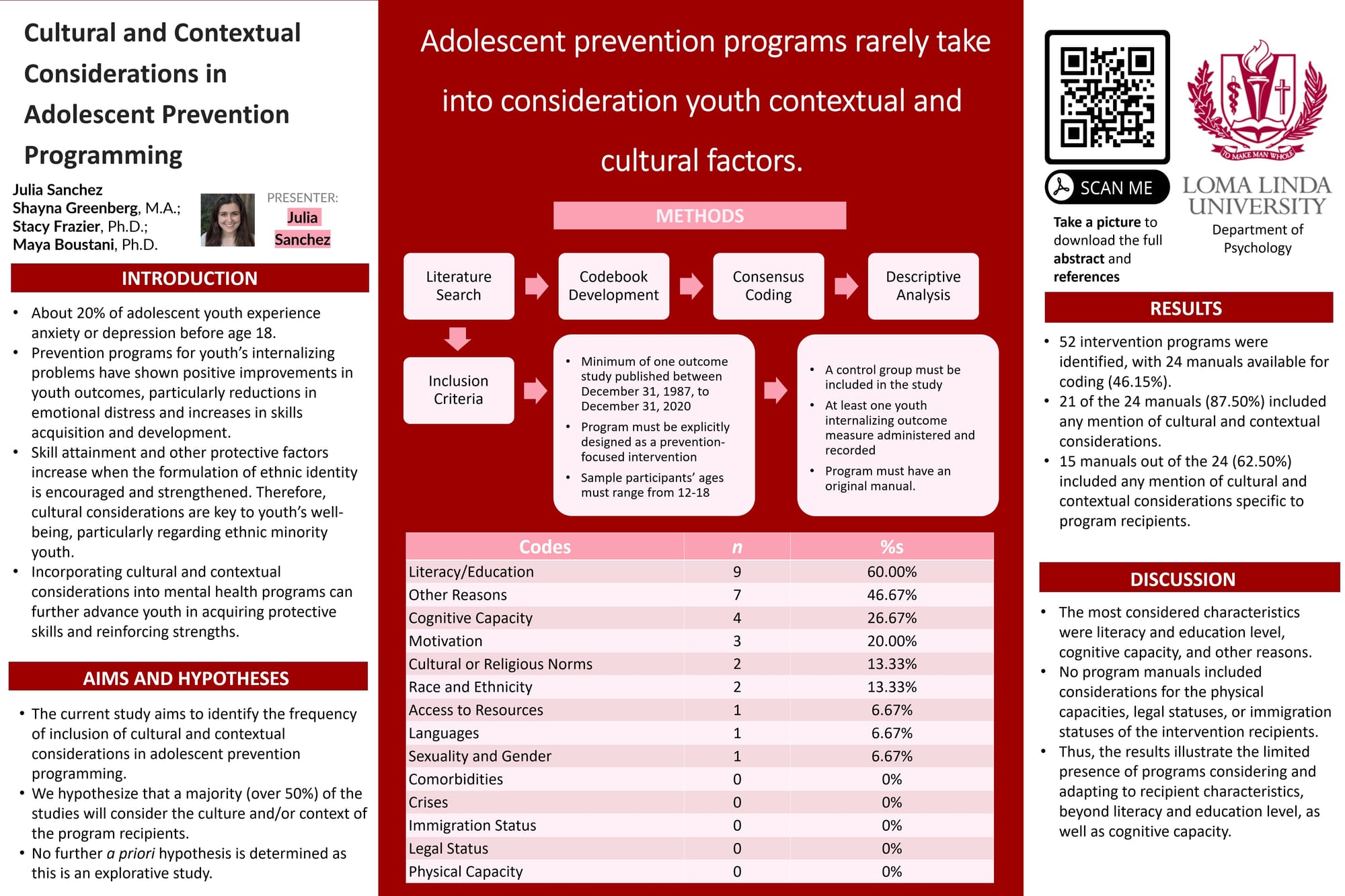Adolescent prevention programs rarely take into consideration youth contextual and cultural factors.

About 20% of adolescent youth experience anxiety or depression before age 18. Prevention programs for youth’s internalizing problems have shown positive improvements in youth outcomes, particularly reductions in emotional distress and increases in skills acquisition and development. Skill attainment and other protective factors increase when the formulation of ethnic identity is encouraged and strengthened. Therefore, cultural considerations are key to youth’s well-being, particularly regarding ethnic minority youth. Incorporating cultural and contextual considerations into mental health programs can further advance youth in acquiring protective skills and reinforcing strengths. The current study aims to identify the frequency of inclusion of cultural and contextual considerations in adolescent prevention programming. We hypothesize that a majority (over 50%) of the studies will consider the culture and/or context of the program recipients. No further a priori hypothesis is determined as this is an explorative study. 52 intervention programs were identified, with 24 manuals available for coding (46.15%). 21 of the 24 manuals (87.50%) included any mention of cultural and contextual considerations. 15 manuals out of the 24 (62.50%) included any mention of cultural and contextual considerations specific to program recipients. The most considered characteristics were literacy and education level, cognitive capacity, and other reasons. No program manuals included considerations for the physical capacities, legal statuses, or immigration statuses of the intervention recipients. Thus, the results illustrate the limited presence of programs considering and adapting to recipient characteristics, beyond literacy and education level, as well as cognitive capacity.



